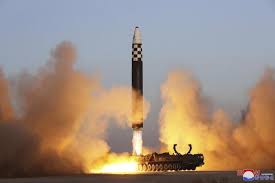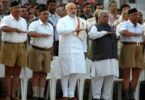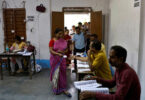SEOUL (AP): North Korea said Friday it fired an intercontinental ballistic missile to “strike fear into the enemies” as South Korea and Japan agreed at a summit to work closely on regional security with the United States and staged military exercises around the region.
The missile was launched Thursday morning hours before South Korean President Yoon Suk Yeol met with Japanese Prime Minster Fumio Kishida at a summit partly aimed at rebuilding security ties between the US allies in the face of North Korean nuclear threats.
With four missile displays in about a week, North Korea has ratcheted up its tit-for-tat response to ongoing US-South Korean military drills that are the biggest of their kind in years.
The Biden administration wants better South Korea-Japan ties, which declined over historical issues in recent years, as it pushes to strengthen its alliance network in Asia to counter the North Korean nuclear threat and China’s rising influence.
Aside from their combined exercises that began Monday and run through March 23, the United States and South Korea are also participating in anti-submarine warfare drills, along with Japan, Canada and India, that began Wednesday.
North Korea’s official Korean Central News Agency said leader Kim Jong Un supervised the test-firing of the Hwasong-17 missile and stressed the need to “strike fear into the enemies” over what it called the “open hostility” shown to the North by the US-South Korea exercises.
Launched at a high angle to avoid the territory of North Korea’s neighbors, the missile reached a maximum altitude of 6,045 kilometers and traveled 1,000km before landing in waters off the country’s eastern coast, KCNA said.
The South Korean and Japanese militaries assessed the flight similarly, indicating the US mainland is within the missile’s range. It remains unclear whether North Korea has developed nuclear bombs small enough to fit on its long-range rockets or the technology to ensure its warheads survive atmospheric reentry when fired at a normal trajectory.
North Korea’s official Rodong Sinmun newspaper published photos of Kim watching from afar as the missile blasted off from a launch vehicle parked on an airport runway.
Rodong Sinmun also published photos implied to have been taken by a camera on the missile as it soared into space. They showed a rounded view of the Earth, with clouds scattered over what appeared to be the Korean Peninsula and Asian coastline.
The photos were apparently intended as proof the missile would be capable of accurately striking its target, said Cheong Seong-Chang, a senior analyst at South Korea’s private Sejong Institute.
While all of North Korea’s ICBM tests have been conducted on a high angle, Cheong said the North is likely coming closer to launching one of those missiles at an angle closer to normal ballistic trajectory across the Pacific Ocean, in what would be one of its most provocative weapons demonstrations ever.
KCNA said the ICBM launch sends a “stronger warning” to North Korea’s rivals who are escalating tensions with their “frantic, provocative and aggressive large-scale war drills.” The test also was designed to confirm the reliability of the weapons system, KCNA said.
Kim said it’s crucial for North Korea’s nuclear missile forces to maintain readiness to counterattack rivals with “overwhelming offensive measures anytime” and make them realize their persistent and expanded military actions will “bring an irreversible, grave threat to them,” KCNA said.







